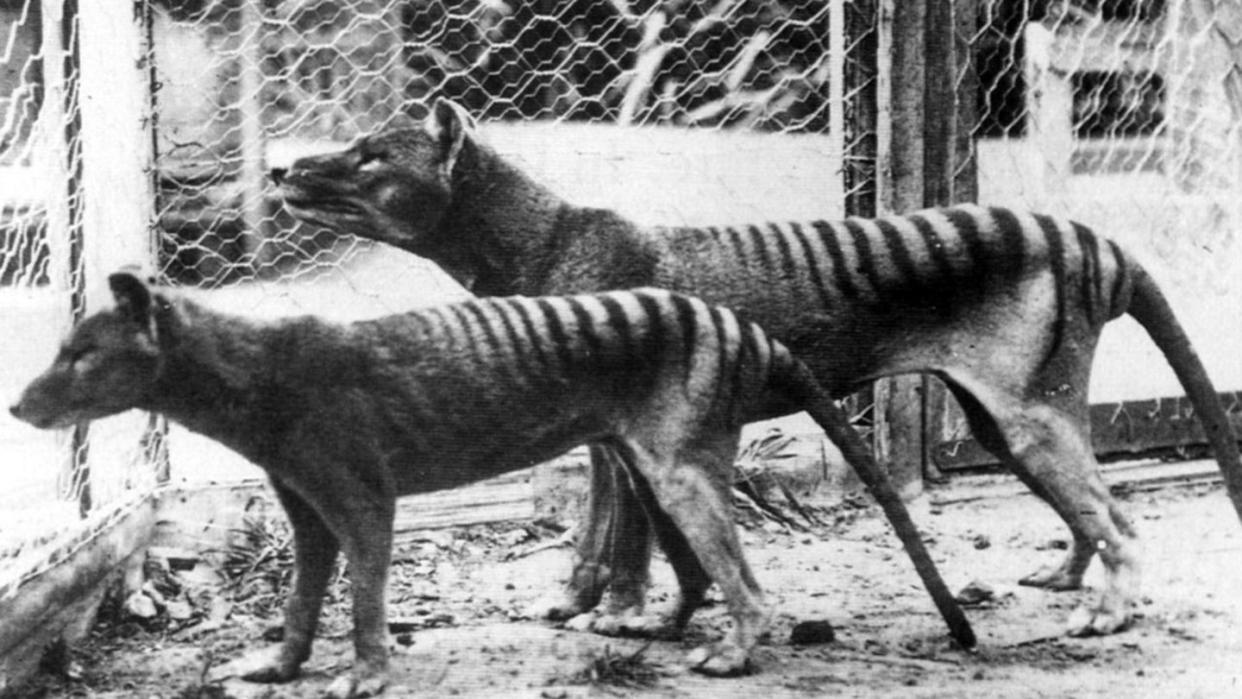The Tasmanian Tiger Has Been Extinct for 87 Years. It's About to Return From the Dead.

"Hearst Magazines and Yahoo may earn commission or revenue on some items through these links."
Science could soon bring an animal back from the dead—one whose time on Earth was cut short due to systematic human predation.
Thylacines, known more commonly as Tasmanian Tigers, were carnivorous marsupials native to the islands of New Guinea and, of course, the Australian island of Tasmania. Though they died out in New Guinea thousands of years ago, Tasmanian Tigers—as their name suggests—persisted on the southeastern Australian island much longer.
Unfortunately, Tasmanian Tigers were seen as a threat to local livestock in the the 19th century, and a decades long bounty hunting system decimated their numbers to the point of extinction. The last known thylacine died in captivity in 1936.
Despite Sasquatch-esque rumors of the thylacine’s survival, no confirmed specimen has ever been found since.
So, scientists might try another tactic to see them again—making one from scratch using RNA sequenced from a 132-year-old specimen. A new paper, published this week in the journal Genome Research, details how millions of RNA sequences were isolated from a specimen stored at room temperature. These sequences will give scientists unprecedented detail about the thylacine’s genes, as well as how proteins were made throughout its body.
The RNA came from the thylacine’s skin and skeletal muscle tissues, and this information forms what’s known as the animal’s transcriptome. Simply put, the genome contains information about the organism, which is then expressed by RNA, or the transcriptome. The researchers found sequences in muscles that account for how those muscles stretch and contract, while other sequences in the skin revealed information about keratin—the stuff that helps for hair, nails, and the skin’s outer layer.
“Resurrecting the Tasmanian tiger or the woolly mammoth is not a trivial task, and will require a deep knowledge of both the genome and transcriptome regulation of such renowned species, something that only now is starting to be revealed,” Emilio Mármol, lead author of a study and a computational biologist at the SciLifeLab in Sweden, said a press statement.
Although this is a big step toward potentially resurrecting this lost species, one that was decimated to human hunting practices, it’s also a huge boon for recovering RNA from other extinct animals. Previously, RNA was received from a 14,300-year-old wolf, but its body had been frozen in permafrost. Recovering RNA from a museum sample (the Stockholm Natural History Museum, in this particular case) could be good news for species whose time was cut short by human-induced extinction.
In our short time on Earth, humanity has done an unprecedented amount of damage to the natural world. With some help from science, maybe we will someday be able to repair some of that damage.
You Might Also Like

